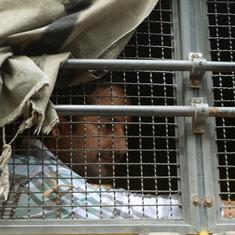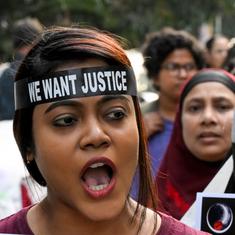North Korea’s sixth nuclear test confirms it is very close to perfecting a miniaturised warhead for deployment on its missile delivery systems. The 6.3 magnitude seismographic reading registered by the test blast is approximately ten times more powerful than that recorded from its nuclear test in September 2016.
There seems to be no outcome from this crisis in which US power is enhanced. This adds to the gravity of the Trump administration’s impending response to the nuclear test. Let’s walk through the possible scenarios.
War
If the US goes to war with North Korea, it risks the lives of millions of people across the region.
US Secretary of Defence Jim Mattis responded to the latest test with a threat of an “effective and overwhelming military response”. This is the kind of rhetorical overreach that is undermining US regional standing under the Trump administration.
There are high risks in any military action against North Korea. There are essentially no good options for compelling it with force. As recently departed White House adviser Steve Bannon said:
There’s no military solution [to North Korea’s nuclear threats], forget it. Until somebody solves the part of the equation that shows me that ten million people in Seoul don’t die in the first 30 minutes from conventional weapons, I don’t know what you’re talking about, there’s no military solution here, they got us.
The US loses in any war scenario, even though its combined military forces with South Korea would inevitably win such a conflict.
Squibbing it
If the Trump administration talks tough and doesn’t follow through, it leaves America’s regional allies exposed – and gifts China pole position in shaping relations in northeast Asia.
America’s northeast Asian alliances, particularly with South Korea, will be challenged regardless of what Donald Trump does next.
North Korea’s nuclear-capable intercontinental missiles increase the risk to the US of defending South Korea and Japan in the event of war. This undermines their governments’ faith in America’s security guarantee. It does not help that the Trump administration has been slow to fill the ambassadorial roles to South Korea and Japan.
Any military action that leads to an escalation to war risks a North Korean artillery attack on Seoul, and missile strikes on other targets in South Korea, Japan and further afield.
North Korea is more likely to use nuclear weapons if backed into a corner and the perpetuation of the Kim regime was directly threatened. US alliances with South Korea and Japan would come under great stress if they were attacked, given that those alliances are in place to prevent such an occurrence.
Sanctions
If sanctions continue to be ineffectual, North Korea completes its end-run to having a deployable nuclear weapons capability.
This outcome undermines the nuclear nonproliferation regime. North Korea’s successful nuclear weapons development weakens this system by serving as an example to other would-be proliferators that they can develop nuclear weapons without any meaningful consequences – the ineffectual economic sanctions regime notwithstanding.
This outcome will also demonstrate that the US cannot prevent a determined nuclear proliferator from undermining its nuclear hegemony.
Nuclear monopoly, underpinned by the limit on the number of countries with nuclear weapons built into the Nuclear Nonproliferation Treaty, is one of the pillars underpinning US global power. The “nuclear shadow” cast by countries with nuclear weapons provides them with greater leverage in dealing with the US and narrows America’s menu of choice for exercising power.
Trade war with China
If the US threatens to squeeze China as a path to influencing North Korea, it risks a trade war it inevitably loses.
Trump has tweeted that the US “is considering, in addition to other options, stopping all trade with any country doing business with North Korea”. This is a not-so-veiled message to China, North Korea’s largest trade partner.
The United States is considering, in addition to other options, stopping all trade with any country doing business with North Korea.
— Donald J. Trump (@realDonaldTrump) September 3, 2017
Treasury Secretary Steven Mnuchin doubled down on this proposition. He claimed his department was working on a sanctions package that would strangle “all trade and other business” with North Korea.
There have also been calls to urge China to embargo crude oil deliveries to North Korea to further squeeze the Kim regime.
However, the US consumes Chinese imports to the tune of US$463 billion worth of goods. As Hillary Clinton pointed out while secretary of state, China has enormous leverage over the US as its largest creditor.
Risking global recession through a foolish protectionist spiral or forcing China to drop the “dollar bomb” is not a credible strategy for soliciting Chinese assistance with handling North Korea.
Nuclear freeze
In the unlikely event that the US negotiates a nuclear freeze with North Korea, it simply kicks the can down the road.
When we strip back the ritualised tough talk that regional leaders routinely articulate after North Korean provocations, and the inane repetition of the meme that diplomacy equates to “appeasement”, talking to North Korea may be the least-worst option forward.
The Kim regime may agree to a nuclear weapons development and production freeze, or a missile testing moratorium to buy time.
But given the importance of nuclear weapons to Kim Jong-un’s Byungjin development model (simultaneous nuclear weapons proliferation and economic development) to his domestic legitimacy, and North Korea’s long history of coercive bargaining tactics in which it engineers crises to obtain concessions in exchange for de-escalation, this could only be a postponement of North Korea’s inevitable proliferation success.
The problem with the negotiation gambit is that there is no mutually agreeable starting point. There is no outcome in which the regime willingly relinquishes its nuclear weapons program because the Kim regime is so heavily invested in nuclear weapons as the foundation of its security strategy, economic development pathway. and domestic political legitimacy.
A peace agreement
If the US sits down to negotiate a peace treaty with North Korea, its regional prestige will be forever damaged – and the raison d’être of its military presence in South Korea will evaporate.
Another avenue for negotiations to progress may arise once North Korea has perfected and deployed its nuclear weapons capability.
At this time, North Korea may call on the US to negotiate a security guarantee and a formal conclusion to the Korean War, which remains technically alive since the 1953 Armistice Agreement.
But why would North Korea want to engage in such negotiations? It will have greater leverage in these negotiations when backed by a nuclear deterrent.
Yet such an agreement might be the least worrying option available to the Trump administration, given the unpalatability of other options. It seems likely that regional countries will ultimately have to find a way to manage a nuclear North Korea.
A marker of US decline
There are no avenues for the Trump administration to demonstrate strength and resolve that do not ultimately expose the limitations of that strength.
Could current events on the Korean Peninsula represent America’s “Suez Crisis” moment? In 1956, Britain over-reached in its attempt to maintain a post-war imperial toehold in Egypt, exposing the chasm between its imperial pretensions of a bygone era and its actual power in the aftermath of the second world war.
The North Korea crisis is the most obvious face of hegemonic transition. Trump’s US is facing a set of outcomes to the current crisis that are lose-lose. They are exposing the reality of US decline and the growing limitations of its ability to shape the strategic environment in northeast Asia.
For more on this topic, you can listen to Benjamin Habib and Nick Bisley discuss North Korea on this recent La Trobe Asia podcast.
Benjamin Habib, Lecturer, School of Social Sciences, La Trobe University.
This article first appeared on The Conversation.










